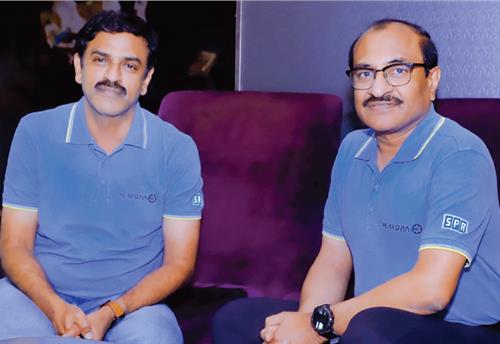The autonomous vehicle age is coming
An insight by Ludovic Lassauce, the director at Tata Communications’ UCC, Mobility and IoT Business Unit.
The technology behind autonomous driving will lead to new and disruptive business models, says Ludovic Lassauce, director at Tata Communications’ UCC, Mobility and IoT Business Unit.
Autonomous cars will completely transform our driving habits, the transportation industry and society as a whole. Not only will the ability to hail a car to your door completely reverse the notion of car ownership, it will also reduce pollution and congestion. What’s more, areas previously used for parking can be revamped for different uses, enabling smart city planners to use the available space more efficiently.
Along with the move to autonomous vehicles, the vast majority of cars on the road in future will be all-electric or hybrid. Several countries, including the UK and France, have already pledged to phase out petrol and diesel cars in the coming years, but the transition to self-driving cars will take a little longer.
Driverless fleets
While we are starting to see vehicles with semi-autonomous features such as autopilot from car makers like Tesla, the tipping point for self-driving technology will happen when entire fleets of driverless cars become available, meaning that cab-hailing firms like Uber and Grab could well lead the way.
However, it will be at least 5-8 years before we see the introduction of autonomous cars at scale, and even then, a period of transition will be required and this is likely to vary dramatically between countries. Some people will still be reluctant to jump into a car without a driver, so an education programme detailing how driverless cars work may also be necessary, along with new legislation surrounding driver responsibility.
Along with the legal and societal implications of driverless cars, the new technology could have also have a major impact on car design, which has remained fairly consistent in recent decades. For example, if a driver isn’t needed, seating configurations could be altered so that all passengers can face each other, while video screens could be fitted to provide entertainment while the car does the driving.
Jaguar recently turned the idea of car ownership on its head with the introduction of an innovative connected steering wheel. The idea is that the individual only owns the smart steering wheel which can be used to summon a variety of different vehicles to their door as part of a membership scheme.
Wiring the car of the future
The technology behind autonomous driving — including AI, big data analytics and IoT network connectivity — will lead to new and disruptive business models as companies evolve to embrace the new opportunities they offer. Companies like Waymo — the self-driving car tech firm which spun out of Google’s parent company Alphabet — will play an important role, as will OEMs, AI specialists and 5G network providers.
IoT connectivity will be the backbone of this transformation, particularly the ability to connect seamlessly to different networks while driving and to manage network policies that interact with edge and cloud in real time. The design of IT architecture between the network edge and cloud is still emerging and the challenge will be to deliver this at scale, while still localising the technology for specific regions.
Tata Communications’ MOVE is a global mobility offering that enables borderless mobile experience so that mobile devices be seamlessly connected and managed wherever they are in the world on any mobile operator’s network.
This sort of flexible, controlled, borderless and trans-network connectivity will be vital to the future of autonomous cars and will require cooperation and partnership from players across a vast number of industries as well as policymakers and industry bodies.
(This article was originally published in the 1 February 2018 issue of Autocar Professional)
RELATED ARTICLES
BRANDED CONTENT: Eliminating the worries of battery charging with smart solutions
The charging infrastructure is the backbone of electric mobility but is also one of the key perceived barriers to EV ado...
The battery-powered disruptor
Greenfuel Energy Solutions is planning to shake up the EV battery market with the launch of a portfolio of specially eng...
SPR Engenious drives diversification at Shriram Pistons & Rings
The engine component maker is now expanding its business with the manufacturing of motors and controllers through its wh...





 By Autocar Pro News Desk
By Autocar Pro News Desk
 07 Apr 2018
07 Apr 2018
 6737 Views
6737 Views









